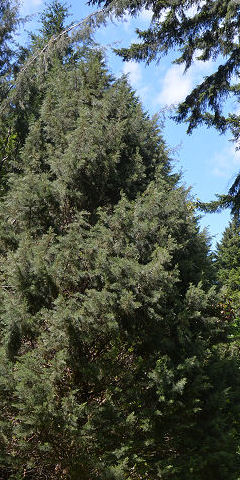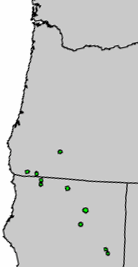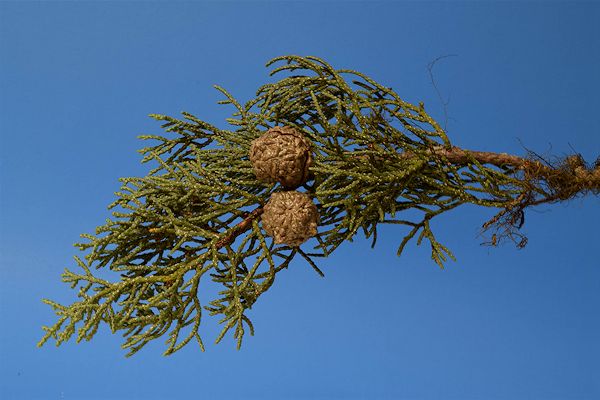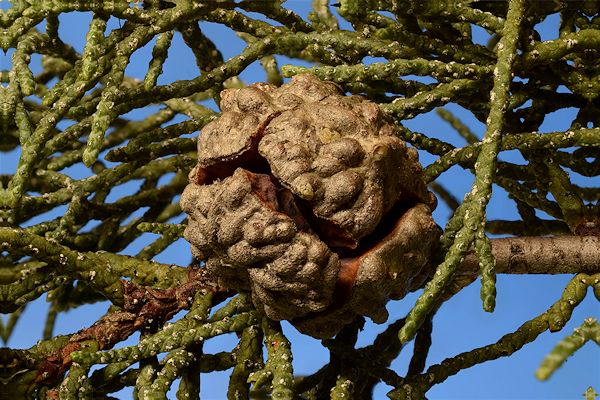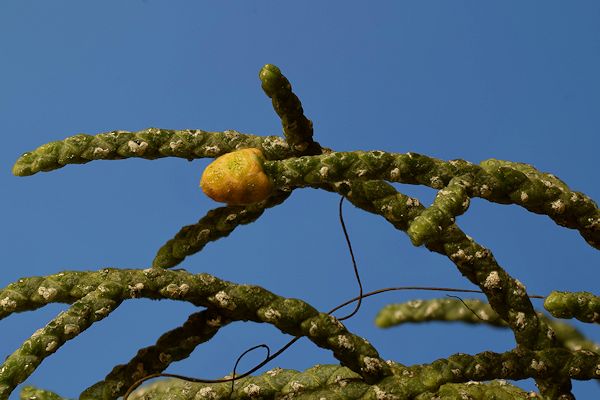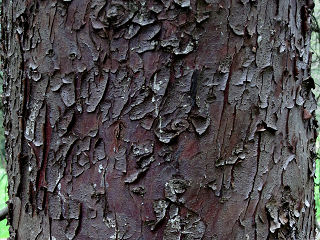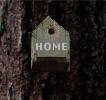 |
Northwest Conifers |
AboutAll ConifersConifersLow-elevationHigh-elevationOthersEast SideSouthwestNon-natives——————Conifer ConesIndexMore Info |
Modoc
Cypress – Hesperocyparis
bakeri
|
|
|
This rare cypress grows to a height of 100 feet (30 meters). Leaves: The tiny scaled leaves, which wrap around branchlets, are gray-green with gland dots that produce a white resin. Cones: 0.5 - 0.8", round with 6 or 8 scales and resin blisters. The cones often remain closed until a wildfire releases the seeds. Bark: The smooth, red-brown bark becomes peeling and then gray on larger trees. Where it grows: This cypress grows in a few isolated sites in southwest Oregon and northern California. It grows farther north than any other cypress in North America. The most northern site is at Flounce Rock, northeast of Medford. See Cypress Species in Oregon by Frank Callahan. Modoc cypress at Hoyt Arboretum Names: The tree is native to the land of the Modoc people, giving it its common name. Other common names: Baker cypress and Siskiyou cypress. The species name bakeri honors California plant explorer Milo Baker, who discovered the species in 1898. Recently, Taxonomists removed North American cypresses from the Cupressus genus and placed them in a new genus, Hesperocyparis. For more information, see The Gymnosperm Database. |
Pollen cone
|
© 2012 Ken Denniston

